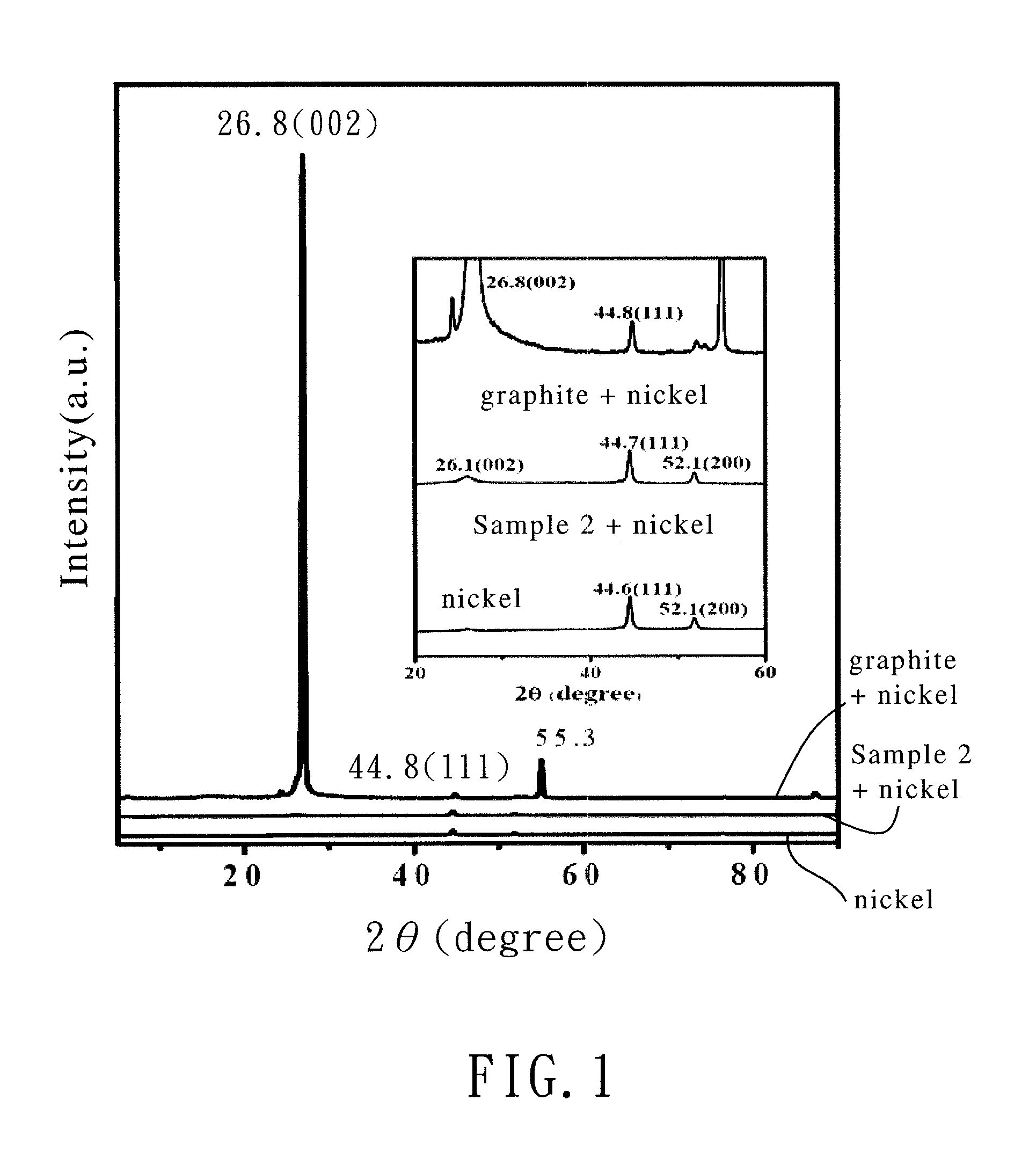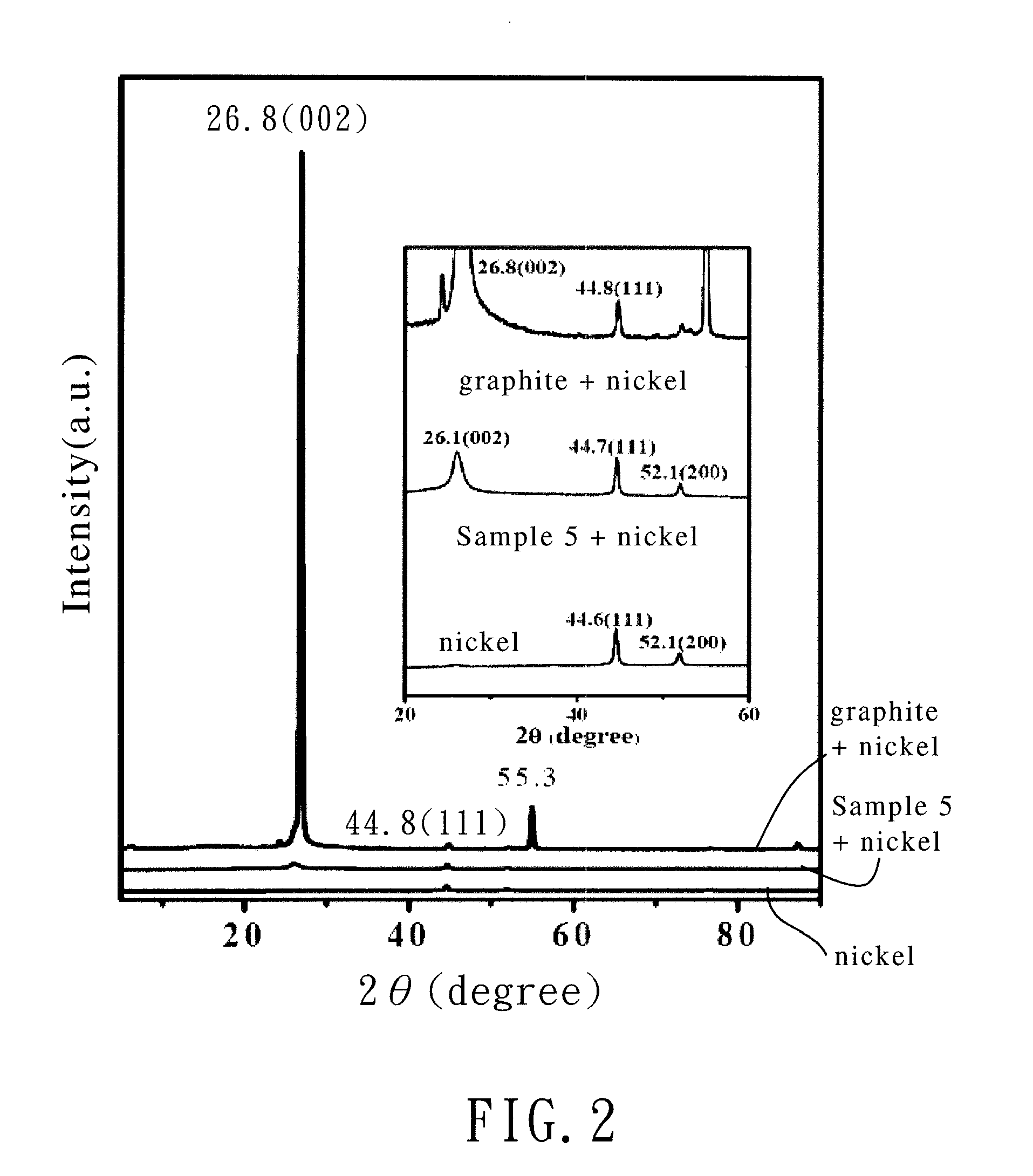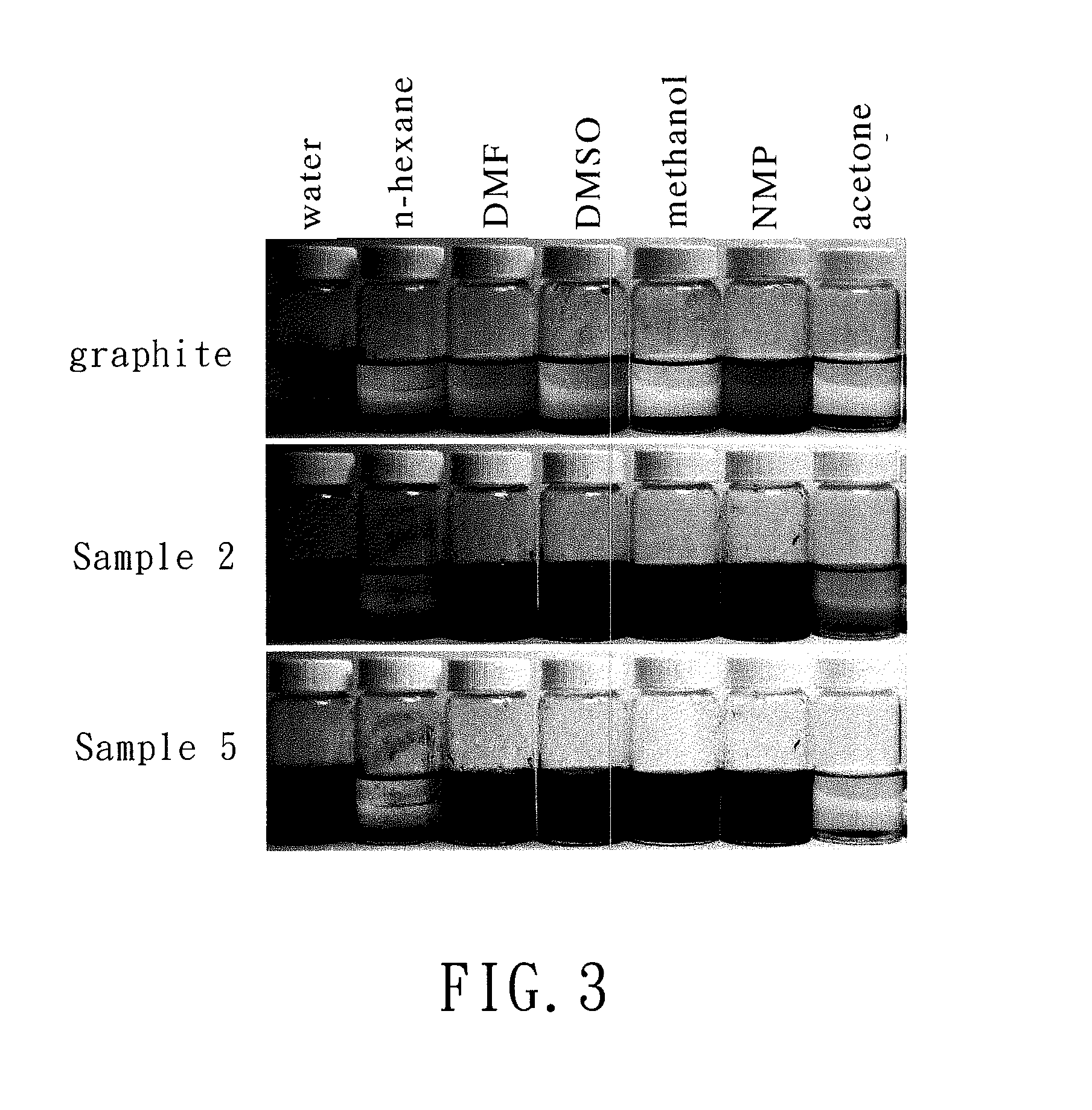Chemically-modified graphene and method for producing the same
a graphene and chemical modification technology, applied in the field of graphene, can solve the problems of affecting the grafting reaction and prone to be suppressed, and achieve the effect of good dispersion ability
- Summary
- Abstract
- Description
- Claims
- Application Information
AI Technical Summary
Benefits of technology
Problems solved by technology
Method used
Image
Examples
example 1
[0033]A chemically-modified graphene of Example 1 was produced by the following steps:
[0034](1) Graphite (50 mg) was placed in N-methyl-2-pyrrolidone (NMP, 200 ml) and was dispersed by virtue of ultrasonic vibration to obtain a graphite dispersion solution.
[0035](2) Maleic anhydride (0.98 g, 10 mmol, commercially available from Showa Chemical Co.) was dissolved in NMP (40 ml), followed by slowly adding with aluminum chloride (1.36 g, 10 mmol) and stirring at 90° C. for 4 hours to obtain a maleic anhydride solution.
[0036](3) After the maleic anhydride solution was heated to 160° C., the graphite dispersion solution was added dropwise into the maleic anhydride solution followed by reaction for 48 hours with stirring and cooling to the room temperature so as to obtain a reaction product.
[0037](4) The reaction product was filtrated using a polyvinylidene fluoride (PVDF) membrane with 0.1 μm of pore diameter and was rinsed with methanol and deionized water, followed by removing NMP by dr...
example 2
[0038]The chemically-modified graphene of Example 2 (Sample 2) was produced by the same method as that in Example 1 except that the weight of aluminum chloride in step (2) was changed from 1.36 g to 4.08 g (30 mmol) and the molar ratio of maleic anhydride to aluminum chloride was 1:3.
example 3
[0039]The chemically-modified graphene of Example 3 (Sample 3) was produced by the same method as that in Example 1 except that the weight of aluminum chloride in step (2) was changed from 1.36 g to 8.16 g (60 mmol) and the molar ratio of maleic anhydride to aluminum chloride was 1:6.
PUM
| Property | Measurement | Unit |
|---|---|---|
| temperature | aaaaa | aaaaa |
| temperature | aaaaa | aaaaa |
| temperature | aaaaa | aaaaa |
Abstract
Description
Claims
Application Information
 Login to View More
Login to View More - R&D
- Intellectual Property
- Life Sciences
- Materials
- Tech Scout
- Unparalleled Data Quality
- Higher Quality Content
- 60% Fewer Hallucinations
Browse by: Latest US Patents, China's latest patents, Technical Efficacy Thesaurus, Application Domain, Technology Topic, Popular Technical Reports.
© 2025 PatSnap. All rights reserved.Legal|Privacy policy|Modern Slavery Act Transparency Statement|Sitemap|About US| Contact US: help@patsnap.com



